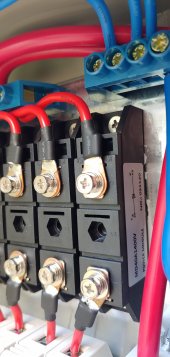Bud Martin
Solar Wizard
- Joined
- Aug 27, 2020
- Messages
- 4,843
OP: For example, if a panel is ~21 volts, 3 in series, each 11 amps, rated at 200 watts?~ 22V max, normally around 18V under load.
OP did not indicate the Voltage of each sub string (two sub strings connected in series to form one pane, l.E 36-CELL PANEL, each sub string has 18 cells with one bypass for each substring) of each panel, as you can see it has two bypass diode for each substring.
Last edited:



